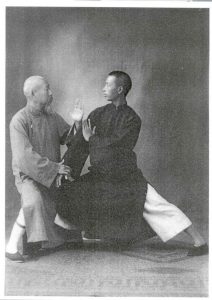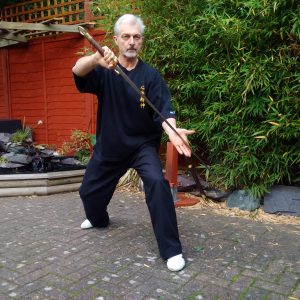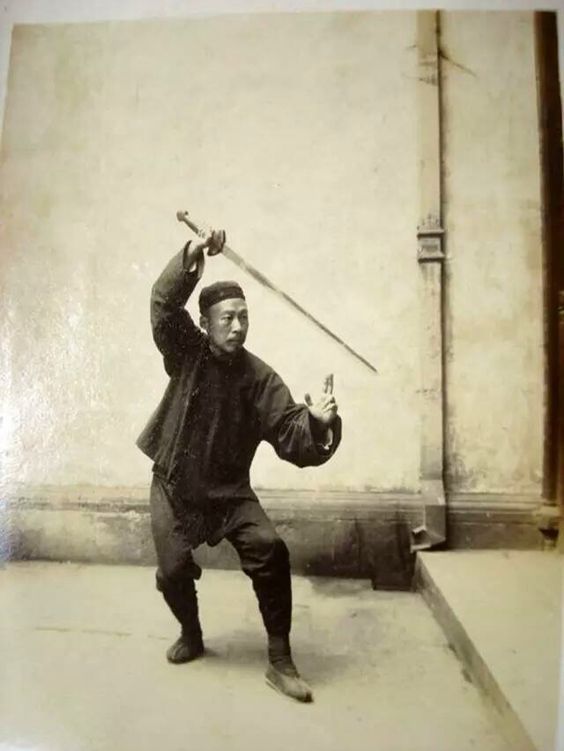What we teach
Curriculum
What we teach in the Tai Chi Curriculum, comprising ten (non-graded) sections. The Curriculum is intended as a guide for Teacher and Student. Each section is carefully introduced and interlinked to develop student’s skill levels. The student may not follow the syllabus in the order shown, as the student’s progression and abilities will determine what is taught at each stage.
Tai Chi Chuan martial art and self-defense is optional.
The three important aspects of training
1. Correct form practice |
Moving postures with structure. |
2. Zhan Zhong Chi Kung |
Standing pole |
3. Tui Shou |
Push hands practice |
These three approaches are the foundation to improve your Tai Chi, these are the three aspects of training which are the focus point within the curriculum.
The Tai Chi Sabre, the Dao
The traditional Tai Chi Sabre or Broadsword, also known as Tai Chi Thirteen Sabre, is one of the important weapons in Tai Chi. Single Edged, Curved, Chinese Broadsword With fa-jing movements, leaps and jumps, this form will balance you internally and for fitness, there is nothing finer as it works every muscle and sinew in the body. This sword form utilizes a heaver weapon which further strengthens the body through the use of thrust, stab, cut, slice and chop. The weight of the sword, with fast movements coupled with spins develops physical fitness, wrist strength, and flexibility, especially to the joints of the upper body is trained. Being a much heavier sword, the students learns the concept of body and footwork to control this weapon rather than swinging the arm, thus linking footwork to body and body to arm and finally arm to sword. There is a lesson in body mechanics and is the reason for its study and will have a profound effect on the understanding of forces applied. The whole form is performed in a strong yet flowing unbroken ebb and flow of swirls and turns with good posture and power with complete control. The form is practiced a little faster than the empty hand form but again speed is a matter of preference and the student should consider all speeds. Relaxation is a requirement to execute this form as the practitioner utilizes centrifugal and centripetal force issued from the inner core directed by the mind to control the broad sword.
The Tai Chi Double Edged Sword , the Jian
The Tai Chi straight double-edged Sword ‘the Jian’ which not only develops the ability to use the sword but promotes strength, extends the chi to the tip of the sword thus the concept of projection is further refined. In accordance with the principles of Tai Chi the sword practice is an exercise for good health and meditation in motion as well as a method of self-defense. The postures of the sword form are soft, flowing on the outside with inner core strengthening on the inside. The sinews, tendons and joints are developed through the choreography as too is muscle tone. Body balance is increased as the sword is extended outwards from the body; stances too are also further developed as a result of this extension. Through its practice the sword form covers a wide range of angles and directions with twist and turns utilizing cut; thrust, stab and slice. The sword practitioner through use of angles and foot work will gain the necessary agility and traction to root through the feet when required and move light also when needed. The focusing of the mind and spirt, practiced with a calm yet lively attitude will have the effect on the body with a sense of control and wellbeing. The Sword form also reinforces the concepts and principles within the empty hand form as the concept of stick is also the method of the swords use,’ first stick then strikes ‘
Pole Form
The pole form provides twisting and thrusting moves to develop the concept of projection, allowing the flow of power to extend further to the tip of the pole. The pole is an excellent form of exercise strengthening the wrist, arms and shoulders with strong rooting through use of stance, yet also enabling the practitioner to move swiftly. The pole is flexible, light and teaches Fa jin, exploding, whipping and spiralling energy through a vibratory nature whilst in motion.


